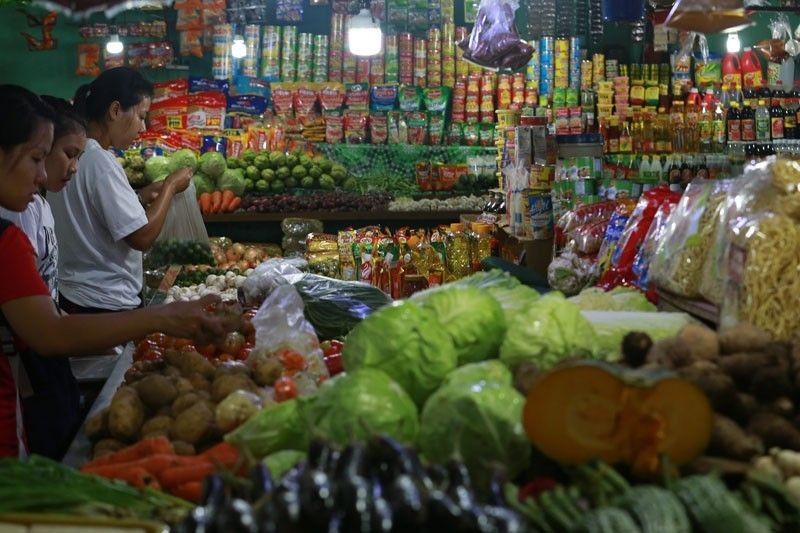Inflation dips to 15-month low in March 2019

MANILA, Philippines — Consumer prices continued to ease in March as headline inflation slowed for the fifth consecutive month, putting the year-to-date average finally within the government’s target band, the Philippine Statistics Authority (PSA) said in a report yesterday.
Inflation, the rate of increase in the prices of basic goods and services, settled at 3.3 percent in March – the lowest in 15 months or since registering at 2.9 percent in December 2017 and coming off a near-decade high of 6.7 percent in September and October last year.
In a briefing yesterday, Deputy National Statistician Josie Perez said the downtrend in inflation was primarily due to the slower growth in seven commodity groups, particularly in the heavily-weighted food and non-alcoholic beverages index.
Easing price increases of the following food items were seen in March: rice, fish, oils and fats; fruits, vegetables, as well as sugar, jam, honey, chocolate and confectionary.
Slower annual growth were also seen in the indexes of the following commodity groups: alcoholic beverages and tobacco; housing, water, electricity, gas, and other fuels; furnishing, household equipment and routine maintenance of the house; health; communications; and restaurant and miscellaneous goods and services.
The National Economic and Development Authority (NEDA) said despite the slowdown in inflation, the government remains on guard against risks that can cause price pressures.
“Despite the further easing of headline inflation in March 2019, the government will remain vigilant for risks such as the El Niño phenomenon, higher rates of electricity and water, and the volatility in global oil prices,” said NEDA officer-in-charge Adoracion Navarro in a statement.
She noted that based on the latest report of the Philippine Atmospheric, Geophysical, and Astronomical Services Administration (PAGASA), mild to moderate El Niño conditions are estimated to last until October 2019 and will weaken in the last three months of the year.
“A prolonged dry spell may affect the prices of food and utilities in the short term,” Navarro added.
In a separate statement, the Bangko Sentral ng Pilipinas (BSP) said the possibility of a stronger and prolonged El Nino episode as well as rising global crude oil prices pose downside risks to inflation in the near term.
BSP Governor Benjamin Diokno said the latest inflation outturn is consistent with the central bank’s expectations that inflation would continue to settle within the two to four percent target range for 2019 and 2020.
“However, the possibility of a stronger and prolonged El Niño episode together with the continued rise in global crude oil prices provide upside price pressures over the near term,” Diokno said.
Easing inflation has allowed the BSP to take a breather from its tightening cycle by keeping interest rates steady in three rate setting meetings last December, February and March.
In its latest assessment, the BSP’s Monetary Board said it sees interest rates averaging 3.1 percent this year and three percent next year.
Diokno said the potential slowdown in domestic economic activity due to the budget impasse as well as continued uncertainty in the global economic environment also present downside risks to inflation.
“Against this backdrop, the BSP continues to keep a close watch over price developments in the country and shall consider all relevant information at its next monetary policy meeting on May 9 to ensure that the monetary policy stance remains consistent with the BSP’s primary mandate of price stability,” Diokno added.
For his part, BSP Deputy Governor Diwa Guinigundo said inflation last month was very much consistent with the BSP’s forecast of 3.1-3.9 percent and confirms the central bank’s view that inflation would sustain the downtrend for the rest of the year.
“Year-to-date at 3.8 percent has started to fall within the target of two to four percent. Given the new risks coming from higher oil prices and El Niño dry spell, among other emerging risks, we need to be very careful in shaping monetary policy in the next few quarters even as the global economic slowdown could pose downside risks,” Guinigundo said.
He added there is a need to see a clear disinflationary trend established by more observations of within target monthly inflation readings with year-to-date inflation firmly settling within the range.
Nicholas Mapa, senior economist at ING Bank Manila, said easing inflation continues to leave the BSP’s policy door wide open.
“With inflation now more firmly entrenched, inflation expectations anchored and demand side pressures to inflation limited, we do expect the BSP to finally consider reducing reserves in the near term and slashing its policy rate at the May 9 meeting given signs of growth slowing after several institutions scaling back their growth projections for the year,” Mapa said.
And although risks to the inflation outlook remain, Mapa added the threat of oil price spikes and El Niño crop damage all emanate from the supply side of the equation and would be best addressed by measures on the supply side.
- Latest
- Trending






























